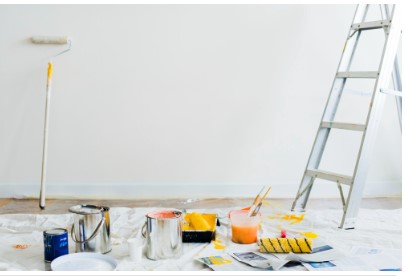Floor repair and installation can transform the look and feel of your home, adding value and enhancing its overall aesthetic appeal. Whether you’re dealing with damaged flooring that needs repair or you’re ready for a complete overhaul with new installation, understanding the timeline for these projects is crucial for planning and minimising disruption to your daily life. In this comprehensive guide, we’ll explore how long the floor repair and installation process usually takes, breaking down each step to give you a clear picture of what to expect.
Initial Assessment and Consultation
The first step in the floor repair and installation process is the initial assessment and consultation. This stage typically involves a professional from Eagleriver Painters visiting your home to evaluate the current state of your floors, discuss your preferences, and provide an estimate. This initial consultation can take anywhere from a few hours to a full day, depending on the size and complexity of the project.
Choosing Materials and Finalising the Plan
Once the initial assessment is complete, the next step is choosing the materials and finalizing the project plan. This involves selecting the type of flooring you want, whether it’s hardwood, laminate, vinyl, or tile. The time required for this step can vary widely, taking a few days to a couple of weeks, depending on how quickly decisions are made and the availability of materials.
Preparing the Area
Preparation is a critical part of the floor repair and installation process. This step includes clearing out furniture, removing old flooring, and making any necessary repairs to the subfloor. The duration of this phase depends on the condition of the existing floor and the size of the area. On average, preparation can take one to three days.
Repairing the Subfloor
In many cases, floor repair and installation involve addressing issues with the subfloor. This might include leveling the surface, replacing damaged sections, or adding underlayment. The time needed for subfloor repair varies based on the extent of the damage but typically ranges from one to two days.
Installing the New Floor
The actual installation of the new flooring is often the most straightforward part of the process. The timeline for this step depends on the type of flooring being installed. For instance, hardwood floors might take longer to install than laminate or vinyl. On average, installing new flooring can take two to five days.
Finishing Touches and Cleanup
Once the new flooring is installed, the final step is adding finishing touches and cleaning up the area. This includes installing baseboards, trim, and transitions, as well as ensuring the workspace is clean and ready for use. This phase usually takes one to two days.
Factors That Affect the Timeline
Several factors can influence how long the floor repair and installation process takes. These include the size of the project, the type of flooring material, the condition of the existing floor, and the efficiency of the contractor. Weather conditions, especially in areas like Eagleriver, can also impact the timeline.
Types of Flooring Materials and Their Installation Times
Different flooring materials require varying installation times. Hardwood flooring, for instance, takes longer due to the need for acclimation, precise installation, and finishing. Laminate and vinyl are quicker options as they often come in click-lock systems, allowing for faster placement. Tile installation time can vary based on the size and complexity of the pattern. Knowing the material’s installation time helps in planning and setting realistic expectations.
The Role of Professional Expertise in Floor Repair and Installation
Professional expertise plays a significant role in the efficiency and quality of floor repair and installation. Experienced contractors like those at Eagleriver Painters bring knowledge of best practices, efficient techniques, and the ability to handle unexpected challenges. This expertise not only ensures a smoother process but also enhances the longevity and appearance of your flooring.
Common Challenges in Floor Repair and Installation
Floor repair and installation can encounter various challenges, from unexpected subfloor damage to material shortages. Weather conditions, especially in areas like Eagleriver, can also pose difficulties. Understanding these potential challenges allows you to prepare and work with your contractor to mitigate delays and ensure a successful project.
DIY vs. Professional Floor Repair and Installation
While DIY floor repair and installation might seem cost-effective, it often leads to longer timelines and potential mistakes. Professionals provide a higher quality finish, ensure proper installation techniques, and can complete the job more quickly. Weighing the pros and cons of DIY versus professional services helps you make an informed decision.
FAQs about Floor Repair and Installation
Q1: How can I prepare my home for floor repair and installation?
A1: To prepare for floor repair and installation, clear the area of furniture and personal items, ensure pets and children are kept safe, and communicate any specific requirements to your contractor.
Q2: Will I need to vacate my home during the process?
A2: In most cases, you won’t need to vacate your home, but you may need to limit access to the work area. Discuss this with your contractor for specific recommendations.
Q3: What types of flooring are best for quick installation?
A3: Laminate and vinyl flooring are often quicker to install compared to hardwood or tile, making them good options if you’re looking to minimize disruption.




